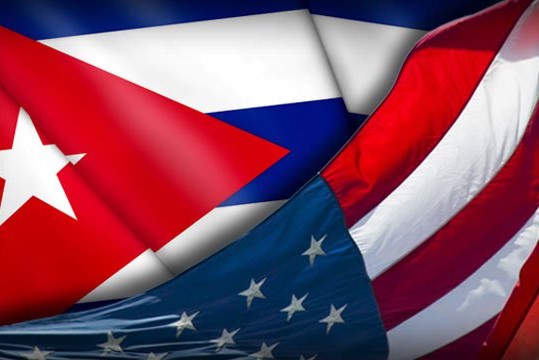By
Ricardo Swire
Washington has formally announced the end of America’s shortlived normalized relations with Cuba. On Friday June 16, 2017 the US top decision maker’s formal speech reinforced a pledge to “very strongly restrict American dollars from flowing to the Cuban military, security and intelligence services.”
The decision was delivered during a period of increased regional drug trafficking activity. Cuba occupies a geographical area of forty-two thousand square miles, with three thousand miles of coastline.
The Caribbean island is 90.5 miles from Key West Florida. Both Cuba and America share a vested interest in successful law enforcement tactics on Caribbean trafficking routes. In 2015 Cuba seized nine hundred and six kilograms of illegal drugs. One hundred and eighty-two kilos were cocaine, seven hundred kilos marijuana and twenty-four kilos of hashish oil. During the same period forty-eight suspicious go-fast boats arrived on Cuba’s southeastern coast.
In July 2016 a US/Cuba drug accord was signed, direct communication between America’s Drug Enforcement Administration (DEA) and Cuba’s Direccion Nacional Antidrogas or National Anti-Drug Directorate (DNA) beginning. A United States Coast Guard (USCG) liaison officer was assigned to the American Embassy in Havana, he/she coordinating with the DNA. Tactical data on vessels transiting Cuban waters is shared, joint responses coordinated.
America’s State Department alluded that transnational drug trafficking organizations (DTOs) mostly bypass Cuban and American maritime patrols by skirting Cuba’s territorial waters. On the alternate route Jamaica and Cuba share intelligence, evident in a July 2016 Cuban court verdict. Eleven jailed Cubans were part of a prosperous marijuana smuggling syndicate operating between the two islands. Through the exchange of intelligence, arrangements were made for the Cuban mastermind’s extradition from Jamaica.
One International Narcotics Control Strategy Report (INCSR) underscored the importance of similar US/Cuban collaboration, with special reference to the interception of a Jamaica originated drugs shipment. USCG resources shared relevant intelligence with Cuban Border Guard officials that resulted in seizure of the seven hundred kilograms of Jamaican marijuana. Cuban DNA agents reciprocated by notifying the USCG of a drug plane’s whereabouts. The aircraft was surveilled air-dropping thirteen bales of marijuana in rural Cuba.
Over twelve months Cuba/US coordinated drug operations successfully interdicted thirty-one go-fast drug boats. Since America’s “wet foot, dry foot” immigration policy was rescinded the DNA recorded trafficking increases. The Cuban Adjustment Act provides migrants, who reach the US mainland, special immigration status. The policy was conceptualized to prevent more mass exodus efforts, similar to the Mariel boat lift in 1980. One hundred and twenty-five thousand Cuban refugees sailed to South Florida, some on homemade watercraft.
The Cuban Adjustment Act created bizarre theatre on Florida’s coasts. In one scenario USCG cutters used water cannons and aggressive interception strategies to force migrant boats away from American terra firma. US Department of Homeland Security (DHS) statistics noted from October 2012 to January 2017 more than one hundred and eighteen thousand Cubans presented themselves at US ports of entry.
The Colonel in charge of Cuba’s DNA conveyed that the revoked US wet foot, dry foot policy caused “readjustment” by the island’s organized criminal groups. The DNA’s most senior officer reported; “We have evidence that criminal networks are moving from human trafficking to drug trafficking, or both at the same time.” From January to June 2017 three tons of cocaine and marijuana were seized. More than triple 2016’s total for the corresponding period.
In twelve months Jose Marti International Airport’s security officers intercepted forty-two kilograms of drugs. The haul comprised thirty-three point six kilos of cocaine, seven point four kilos of marijuana and one kilo of a synthetic drug called “cannabimimetic,” a substance with similar metabolisms and effects to marijuana. The Cuban Ministry of Interior’s maritime/aerial multi-agency counter-narcotics missions, such as “Operation Hatchet,” are supported by DNA staff on the ground. Another Colonel, in his role of Cuba’s Coast Guard and Border Patrol commander, informed that “a reduction in US/Cuban cooperation may result in increased drug flow to US shores.”
Ricardo Swire
Ricardo Swire is the Principal Consultant at R-L-H Security Consultants & Business Support Services and writes on a number of important issues.



No Comments Yet!
You can be first to comment this post!